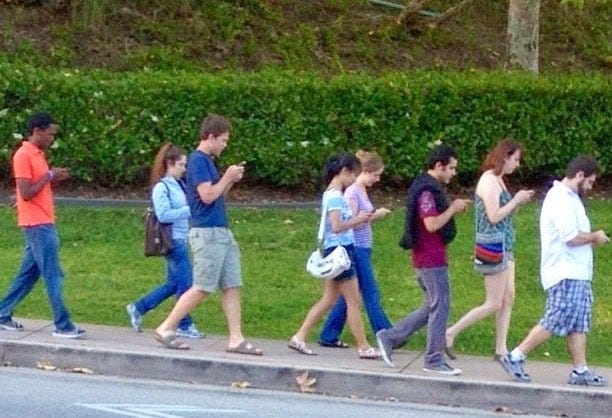Serendipity by design
Ideas for applying serendipity principles in the digital world

(I) An (un)expected discovery
I love flea markets. Whenever I go there, I usually don’t look for anything specifically; I am just opening myself to chance, to discovery by luck. I suppose most of the people coming to this place do the same: they expect a surprise and almost nothing else. On a recent visit to that “holy” place, I found a laptop that looked new. Alas, it was not powering up, and I haven’t had a way to test it. Despite this, I could not resist but bought it: it was the best $50 that I had spent in my life. With the addition of a new battery, I am using this decade-old beast as my daily driver — and typing this story today.
Almost at the same time as this happy accident, while reading an interesting book about ideas[1], I learned about a strange word: Serendipity. This word was invented in 18th century. It means “A happy accident exploited by a “sagacious” or clever person.” Apparently, there were many lucky discoveries back in the day, much enough for the new word — and the whole concept — to be invented.
Serendipity is a strong fertiliser and a catalyst for new ideas: Nearly half of all scientific discoveries are accidental, a research finds[2]. Many scientific discoveries were made by accident: Penicillin, X-Rays, Radioactivity, Atomic nucleus, Plastic, Dynamite, Anaesthesia, The Coordinate System[3]…
(II) Unpopular Opinion: Current technology does not embrace serendipity
So my finding on the flea market was “serendipitous discovery”: an accidental, unplanned event with lucky outcome. There are many of those kinds of events in the wild, even nature itself relies on serendipity to push evolution forward. But the phenomenon of accidental discovery is much different from how today’s computers and digital products are built. In a digital world every occurrence is planned to keep users in “flow”, to optimise funnels, user behaviour is engineered and there is no serendipity in it — everything is pre-programmed and decided upfront. No improvisation, that’s the plan. Unfortunately, this is not how life works.
Wait, weren’t computers initially envisioned as “vehicles for the mind” that augment human intellect?[4] The promises of computers in the early 50’s were to sharpen our brain, to help us calculate complex equations, to store and quickly find large amount of data, to help us bring informed decisions for hard problems, to assist in rational thinking…
Fast forward to today, and we go around with supercomputers in our pockets. Do those little machines improve our lives anyhow? Do they help us in rational thinking?

Sadly, we can think of today’s computers as expensive TV sets used mainly for consuming content. Search engines prioritise personalised content only relevant to us. Algorithms show things that are based on our location, behaviour, previous searches and preferences. This inhibits serendipity and causes intellectual isolation. It is a phenomenon called a filter bubble: a situation when internet limits our views, causes convergence of thinking and strong polarisation of the people. What I don’t see, I don’t know exists at all!
The amplification of a particular viewpoint brings together like-minded people. This is another phenomenon known as an echo chamber, that limits the views in a closed group. It’s happening when loss of spontaneous thinking leads to the unification of behavior and when group members start to think in an extremist way. Diversity exists, but among groups — not among individual members of the group. Most of today’s technology puts us in echo chambers. I have a flashback to Dark Ages when everybody was thinking the same.
Opportunities are all around us, but we have beliefs, habits and authoritative people that block them[5]. This is why the convergence of thinking is dangerous: it’s blocking the human mind from growth. “You miss 100% of shots that you don’t take” — a famous quote is saying — but technology inhibits opportunities to even take shots.

Wearable technology can pull our senses away from serendipity experiences. Sunglasses or headphones can block our perceptions and bring us one step back from serendipity. Most of the products that we wear make us alone, separated, blocked from experiencing the outer world.
Tech products can serendipitously expand our perspectives if designed well: think of glasses instead of sunglasses, ear amplifiers instead of headphones. We want a computer to be a mind amplifier, a resonator for ideas — not a low-pass filter (like reality is). If serendipity can bring us closer to the new ideas, why don’t we integrate it into digital products as an agent that catalyzes creativity?
(III) Generating ideas, with or without technology
Walking in nature was one of the first ways to generate ideas. Greek and Roman philosophers were wandering outdoors to boost their creative thinking process. From ancient times, strolling around in the outdoors enabled serendipity and inspired thinkers to new ideas.
Talking to others is another good source of inspiration. A unique invention in every Roman city that provoked serendipity was the Forum, a square placed at the intersection of two main streets. It was the central hub for city public life[6] . During the day, the Forum encouraged interaction between citizens and newcomers, becoming a fertile ground for exchanging ideas.
Today we see examples of engineered serendipity in architecture everywhere. Well-functioning city or university exposes us to diverse people and to the great versatility of ideas. Architects recognized the value of unexpected meetings and conversations, similar to the Forum in the Roman era. They coined the phrase “Water-cooler effect”, a situation when co-workers gather around the office water-cooler and chat. The term is then generalized to represent the effect of random collisions of people in the work environment. Since the phenomenon is recognized as beneficial for developing new ideas, many business buildings and its lobbies are designed for unplanned employee encounters.

There is an interesting example of how one author adapted his writing workflow around serendipity. His name is Niklas Luhmann, known as one of most productive social scientists: he wrote 50 books and more than 600 scientific articles in his lifetime. The essence of his technique was to take as many notes as he could from the material he read, to connect notes with each other using a specific indexing method and to arrange notes so that they could be easily recalled. When he reread his notes later a new and unexpected knowledge emerged due to interconnectedness of the notes and high quantity of the information they carried.
How was it possible to conceive this system in the era before computers? Luhmann wrote notes on paper cards. He then added indexes on cards to record relationships with other cards. This ancestor of today’s hypertext system consisted of over 90.000 cards and was called “Zettelkasten” — a German term for “slip box” [7]. Furthermore, he put an accent on linking between notes wherever he saw fit. By doing so, he was able to create a huge network of interlinked ideas that allowed him to explore and develop his thinking on a wide range of topics.

Serendipity can produce new insights, as in Luhmann’s example. But it’s because he stimulated it in a systematical and theoretically informed way, hoping to develop knowledge from once-neglected ideas. Luhmann followed connections, letting the trails surprise him while uncovering new wisdom. Think of it as “privately maintained Wikipedia” that can easily send you down the rabbit hole[8] of valuable information. This is the rare example that the system gets better when more information is added, and when the system gives more value, more is consumed.
(IV) Serendipity Principles
Louis Pasteur’s famous quote, “Chance favours only the prepared mind” [9] is a powerful one yet simple to remember. Its clarity inspired me to describe a meta-framework for cultivating serendipity.
Most serendipitous discoveries share common concepts: Randomness, Preparedness, Attentiveness and Reflection. They are interrelated, and serendipity is unlikely to occur if any of them are absent. Technology can help us to stimulate serendipity once we understand those principles well.
Randomness is a key ingredient of every serendipitous discovery. It can appear in three forms: when a creator is looking for one discovery but stumbles on another one; when a creator has discovered what he searched for, but taking unplanned steps; and when a creator accidentally finds breakthrough innovation without intention. All those situations when new knowledge emerged are “happy accidents”.
Preparedness to recognise accident that brings new value and distinguish it from other “just random” accident. This means that a creator should accumulate as much knowledge as he can about desired topic — the more, the better — so that he is able to observe random event that is, in fact, a new discovery.

Attentiveness to an unlikely event means being open and perceptive to unexpected opportunities for discovery that can come from anywhere. Part of it is curiosity; and curiosity shows up if there is no fear.
Reflection about the event means thinking critically about the event. How it relates to prior knowledge? What are the connections with similar topics? What I have learned right now? Is this valuable? If not, why it’s not?
We need all mentioned components to pursue serendipity in a disciplined way. But how can technology help us in our quest? Should we just prepare ourselves for the unexpected event, expose us to the fertile environment where is highly likely to stumble upon to something random that can benefit us, and then reflect on the happening? Is there a place for technology in those steps to ease finding serendipity?
(V) Can technology generate serendipity?
All ingredients in serendipity are under our control except — randomness. Technology can help in this domain.
To design a “serendipity generator” we need a way to produce random events. Fortunately, one of the first things that I learned in programming is that computers can throw random numbers at us! It was the famous “maze” program, easily written in BASIC, that visually demonstrated the power of randomness. It arranged randomly just two graphic elements on the screen forming an endless labyrinth; it made us hungry for more programming in the 80’s. This “demo” program was so popular and ever-present in each computer manual at the time [10].

Generating random number artificially Is difficult, since all computers are designed to be deterministic: computer always returns identical output for the same input. Therefore, random number generator use a “seed” that serves as a basis for calculating the number, and a mathematical formula that compute pseudo-random number based on seed. Computer system time is usually used as a seed. Random numbers generated this way are good enough for everyday use [12].
I started thinking about how “a computer randomization engine” could be used for serendipity. The first analogy that came to my mind was:”Computer can shuffle cards for us!”. Thinking about the practical application of it came a question: what will happen if the computer shows stored data in random order? Imagine social network feed items randomly ordered! Or randomize our phone home screen every time we unlock it? How about “order by random” option when searching for a particular file on the hard drive? Just think about what you may run into if you’ve got emails shown in random order!?
Designers of social networks had been working on this question for a while. I remember the early days when feeds were displayed only sorted by date; and then came the inevitable question of monetization. Product managers started thinking about various metrics that should be maximized [13] to achieve growth strategy. These approaches were not aimed to expand user’s horizons but to increase business value. Their outcomes are doom scrolling, filter bubbles, echo chambers formation — and not necessary serendipity of any kind [14].
Another way to simulate serendipity is to randomly pick one or more items from a data set and expose them to the user. When deciding which items should be chosen, the computer should not pick “whatever random item it can get” but “a relevant random item”, valuable to our discovery. And how do we qualify what is relevant? It can mean “with similar properties”[15], at minimum. There are many algorithmic approaches to this problem that fall within the scope of recommendation engines.
Examples of “relevant items” picked from the larger data collection:
- A friend that I haven’t contacted recently, but every time we meet we spend long hours of quality time
- A place that I haven’t visited lately, but whenever I go there it wakes up my senses and stimulates me to think
- A song that I haven’t listened to for a while, but I enjoy it every time I listen to it
- A note from a book I’ve read that has been long forgotten, that contains timeless wisdom
A lot of digital products exploited the opportunity for the lucky discovery of an item that can bring value but might be long forgotten. Here are some examples:
- “Shuffle playlist” in Music players
- “Explore places” on booking sites
- “Random image” widget on a phone screen
- “Recommended videos” on video platforms
- “Discover shows” on online movie platforms
- “Related posts” on blog post platforms
- “Random article” on Wikipedia
- There is even a “Serendipity meta-section” on social networks [16] showing the best posts from random threads
We all carry supercomputers in our pockets — why don’t we utilize them to integrate some of those principles into our daily lives? Creating a mobile operating system based on serendipity could be very intriguing! A good design decision is to try to place it very close to where we are: on our mobile devices screen, whenever we unlock our phone we see it. We may ditch applications completely, and base all our actions on personal values and intents, instead of doom scrolling.
Here is one example, based on my daily routine and desired habits:

The main idea behind this concept is to show items at random in each area, to engage the owner in a serendipitous activity: to revive old friendships, to uncover forgotten knowledge and to expose timeless wisdom buried deep within.
Serendipitous discovery is especially valuable when looking for information online. We can easily enter filter bubble if search results converge to isolated point of view. Search engines could manipulate us to believe that “what is on first page is the most relevant”, and that “the knowledge that we present to you is the only knowledge that exists”. But we can choose alternative way of finding information online to fight this issue. For a start, you might consider search engine that focuses only on non-commercial content[17], or one that prioritizes personal web sites[18], or a site that deliberately excludes top million sites from results[19].
Switching to a different search engine or method resolves the filter bubble issue only particularly: we are replacing one (limited) database of knowledge with another. And what about finding important information that is written only in language that we don’t understand? What if the information is available only in analog form? Or when it is not recorded at all, but kept and passed on only verbally? Can we make “union” of multiple knowledge databases somehow, instead of going from one siloed source of knowledge to another?
(VI) Non-tech ways of provoking serendipity
A good approach to “engineer” serendipity is to hang out with diverse people. Enlarging your network of contacts is an excellent strategy. The more diverse people you hang out with, the broader your viewpoints will be. Consequently, the chance for serendipitous discovery will increase. For instance, when you go to a conference[20], you have a chance to stumble upon random people, exchange ideas, get inspired and most likely meet someone who can expand your point of view.
One step forward for enlarging your network is to organize your own discussion event [21]. I tried it in 2017. and so far I have organized more than 50 events[22]. I was able to meet an extraordinary amount of smart people as a result of organizing a meetup (…and I thought that I already knew everyone from my town that share common interests with me!). Because of the coincidental interactions that occurred during the events, my knowledge increased significantly.
If you are already surrounded by thought-provoking people, it’s even easier to engineer serendipity: you can organize periodical gatherings with your group to share ideas, motivate and help each other. It does not matter whether the group members share common interests or not: for serendipity, it’s enough to stir up the conversation to unexpected route, as long as it is productive and valuable. Many of the great people in history maintained their small “clubs” of friends where they openly shared ideas, consulted each other and progressed in knowledge altogether. For instance, Einstein maintained that same tradition with his Zurich fellows for more than 60 years[23].
When looking for information, we all reach for our phones and search online. Instead of automatically asking the internet for the answer, why don’t we search elsewhere? For example, libraries are excellent sources of knowledge — although accessing specific information is not as easy as it is when browsing online. Since libraries are spatially organized, they are ideal for exploring and discovering unexpected knowledge. I wrote this essay in the library; every time I go to the break I randomly browse its shelves. Even just a glance to an interesting book can stimulate your thinking.
There are many other examples of exploratory spaces that provide opportunities for investigation, incidental discovery, and learning. Museums and interactive exhibits are great sources of new ideas and inspiration. Whether you are interested in certain topic or you just generally wander around, you will most likely experience serendipitous discovery. Makerspaces and innovation labs are other examples. It is long-known that the Homebrew computer club[24] was very influential in sharping modern personal computers, one of the first makerspaces founded in 1975. Such places promote experimentation, making prototypes, most likely include 3D printing facilities and encourage exploring and combining ideas.
Conclusion

I started noticing the benefits of serendipity a long time ago. Alas, I have not possessed enough wisdom to articulate it precisely — there is simply no word for it in my native language. It took me a long time from recognizing the phenomenon until I was able to correctly explain it to someone, indicating that I understand it well. Learning a new English word certainly helped — this is one example of how language sharpens our thinking. All of the sudden, I started noticing it more and more — as an old proverb says: “once seen, cannot be unseen”. I started filling my notebooks with ideas on how to explain the concept to myself, how to explore it and, eventually, how to engineer it. This is the compilation of those ideas. The initial spark to write this essay was my learning about Luhmann’s brilliant approach to engineering serendipity, in the era before computers.
How to give a chance to serendipity? Next time when you accidentally meet someone interesting, ask yourself: is this occurrence designed by some clever architect? Or — when you are in an unknown city, try to explore it without GPS — your perceptions will be sharpened! Or — Go to the library and make yourself feel “lost”, but prepared and open for a new discovery of wisdom.
But do not forget the flea market; not only will you be doing good for the environment by choosing to buy used items, but you will certainly find something interesting. Once upon a time, I discovered and purchased the machine that has been driving the sound system for my band for over ten years [25].
Thanks to Slobodan Stojanović, Arsenije Catic, Ivan Aksentijevic , Keith Baumwald, Joe Bellavance and Mališa Pušonja for reviewing the initial drafts of this essay and providing valuable feedback. I am heavily inspired by Joe Edelman and his outstanding work about human values.
This essay was originally published on Practical UX website.
Further reading
- What is serendipity?
- Role of chance in scientific discoveries
- The serendipity mindset (book)
- The role of agency in historians’ experiences of serendipity in physical and digital information environments
- How to Cultivate the Art of Serendipity
- A Search Engine Designed To Surprise You
- How do you find the weird parts of the web?
- 5 Philosophers on How a Walk Can Boost the Creative Thinking Process
- Serendipity as an emerging design principle of the infosphere: challenges and opportunities
- Maximizing Serendipity
- The science of why you have great ideas in the shower
- How can we cultivate the art of serendipity?
- Incidental Serendipity
- Internet gains are serendipity’s loss
References
- Where the good ideas come from — Steven Johnson
- Dunbar, K., & Fugelsang, J. (2005). Causal thinking in science: How scientists and students interpret the unexpected.
- Rene Descartes invented coordinate system allegedly while he was lying in the bed, observing a fly above him and thinking how to describe its location relative to walls. A little bit apocryphal, but a good story anyways. Source
- Augmenting human intellect: a conceptual framework by Douglas Engelbart
- Serendipity finds you
- https://www.carpediemtours.com/blog/the-roman-forum/
- Luhmann’s Zettelkasten
- https://xkcd.com/214/
- https://en.wikipedia.org/wiki/Louis_Pasteur
- In fact, so popular that has a whole site devoted to it: https://10print.org
- https://twobithistory.org/2018/09/02/learning-basic.html
- https://en.wikipedia.org/wiki/Pseudorandom_number_generator
- ‘Is anything worth maximizing?’ by Joe Edelman
- https://www.thesocialdilemma.com/
- https://en.wikipedia.org/wiki/Recommender_system#Overview
- https://www.reddit.com/r/Serendipity/
- https://search.marginalia.nu/
- https://wiby.me/
- https://millionshort.com/
- I’m primarily referring to in-person events.
- Meetup platform is one of the most popular platforms that helps people to gather and network.
- I host Practical UX Meetup aimed to product and UX designers.It is one of the first design communities in the region.
- The Friendship among Three Singular Men: Einstein and His Swiss Friends Besso and Zangger
- https://en.wikipedia.org/wiki/Homebrew_Computer_Club
- https://www.reddit.com/r/thinkpad/comments/xw595m/this_beast_is_doing_live_stage_mixing_for_10/
Can technology generate serendipity? was originally published in UX Collective on Medium, where people are continuing the conversation by highlighting and responding to this story.